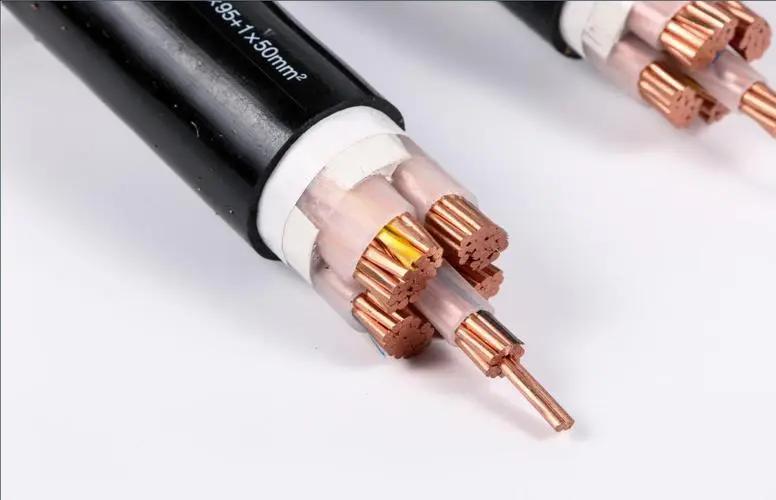The differences between flame retardant cables, low smoke halogen free cables and fire resistant cables:
1. The characteristic of flame retardant cable is to delay the spread of flame along the cable so that the fire will not expand. Whether it is a single cable or laid in bundles, the spread of flames can be controlled within a certain range when the cable burns. Therefore, major disasters caused by fire extension can be avoided, thereby improving the fire protection level of cable lines.

2. The characteristics of low smoke halogen free cables are that they not only have good flame retardant properties, but also the materials that make up low-smoke halogen-free cables do not contain halogens. They are less corrosive and toxic when burned and produce a very small amount of smoke, thus It reduces the damage to people, instruments and equipment, and facilitates timely rescue in the event of fire. It has good flame retardancy, corrosion resistance and very low smoke concentration.
3. Fire resistant cables can maintain normal operation for a certain period of time under flame burning conditions and maintain the integrity of the line. Fire resistant cables produce less acid gas smoke when burning, and their fire resistant and flame retardant properties are greatly improved. Especially when burning, accompanied by water sprays and mechanical strikes, the cables can still maintain complete operation of the line.
Some electrical designers are unclear about the concepts of flame-retardant cables and fire-resistant cables, and do not have a clear understanding of their structures and characteristics. As a result, they are unable to correctly design and select these two cables according to power supply requirements and carry out design agency or supervision work on-site. The laying construction of these two cables cannot be correctly guided.
1. What is flame retardant cable?
Flame-retardant cables refer to cables that: under specified test conditions, the sample is burned, and after the test fire source is removed, the flame spreads only within a limited range, and the remaining flames or burns can self-extinguish within a limited time. Its fundamental characteristic is that it may be burned out and unable to operate in case of fire, but it can prevent the spread of fire. In layman’s terms, in the event of a cable fire, the combustion can be limited to a local area without spreading, and various other equipment can be protected to avoid greater losses.
2. Structural characteristics of flame retardant cables
The structure of flame-retardant cables is basically the same as that of ordinary cables. The difference is that its insulation layer, sheath, outer sheath and auxiliary materials (taping and filling) are all or partially made of flame-retardant materials.
3. What is fire-resistant cable?
Fire-resistant cable refers to the performance that can maintain normal operation within a certain period of time when the sample is burned in a flame under specified test conditions. Its fundamental characteristic is that the cable can still maintain normal operation of the line for a period of time under burning conditions. In layman’s terms, in the event of a fire, the cable will not burn immediately and the circuit will be safer.
4. Structural characteristics of fire-resistant cables
The structure of the fire-resistant cable is basically the same as that of ordinary cables. The difference is that the conductor of the fire-resistant cable uses a copper conductor with good fire resistance (the melting point of copper is 1083°C), and a fire-resistant layer is added between the conductor and the insulation layer. The refractory layer is wrapped with multiple layers of mica tape. Because the allowable operating temperatures of different mica tapes vary greatly, the key to the cable’s fire resistance is the mica tape.
The main differences between fire-resistant cables and flame-retardant cables:
Therefore, the main difference between fire-resistant cables and flame-retardant cables is that fire-resistant cables can maintain normal power supply for a period of time when a fire occurs, while flame-retardant cables do not have this characteristic. This characteristic determines that fire-resistant cables play an important role in modern urban and industrial buildings.
Because once a fire occurs, the power supply circuits of control, monitoring, guidance and alarm systems must maintain normal operation. Therefore, this cable is mainly used in power supply circuits from emergency power supply to user fire protection equipment, fire alarm equipment, ventilation and smoke exhaust equipment, navigation lights, emergency power sockets, emergency elevators, etc.
Email: sales@zhongweicables.com
Mobile/Whatspp/Wechat: +86 17758694970
Post time: 2023-11-30






